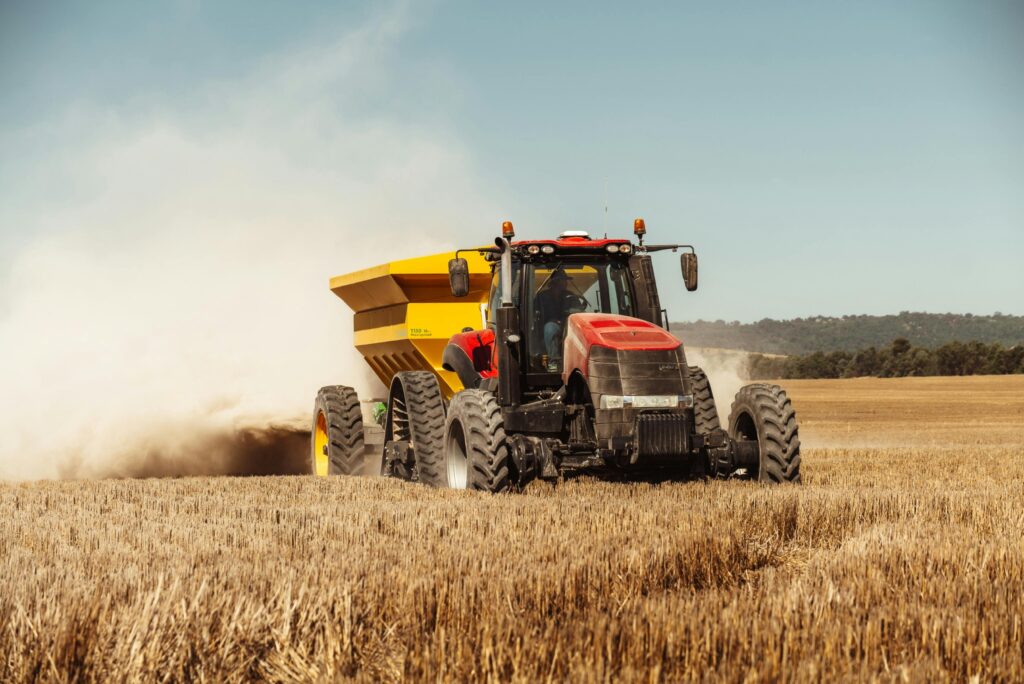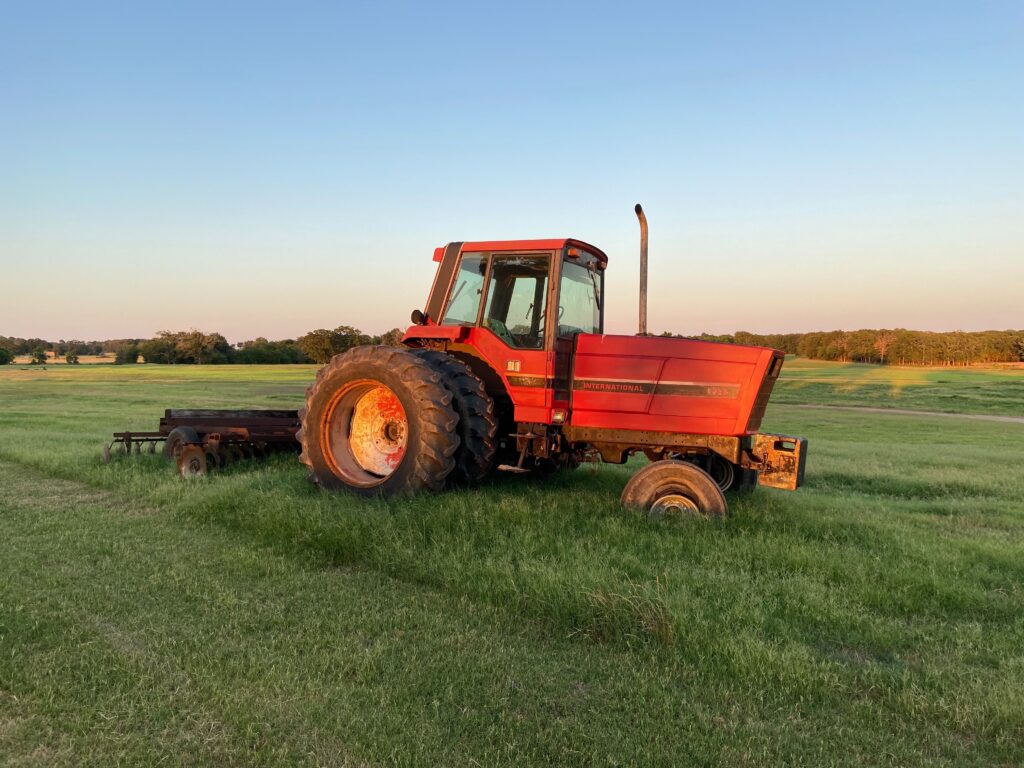Tractors are complex and expensive pieces of agricultural machinery. When considering a farm vehicle purchase, one of the most common questions farmers have is “how many hours does a tractor last?”
This is an important factor in determining the value of a used farm vehicle and estimating how many years of service it may have left. In this comprehensive guide, we will explore the intricate details of tractor lifespans.
Average Lifespan of a Tractor
The average lifespan of a modern farm tractor is 8,000-12,000 hours. However, many factors impact longevity. With proper maintenance and limited use of heavy implements, some tractors may reach over 20,000 hours. Older farm vehicle models often have shorter lifespans around 5,000-8,000 hours.
The table below shows approximate hour ranges for different types of tractors:
| Tractor Type | Average Lifespan (Hours) |
|---|---|
| Modern farm tractor | 8,000 – 12,000+ |
| Older farm farm vehicle | 5,000 – 8,000 |
| Compact utility tractor | 6,000 – 10,000 |
| Heavy industrial agricultural vehicle | 10,000 – 20,000+ |
As you can see, heavier duty tractors designed for intense work often last longer, while older, legacy models have shorter overall lifespans.
What Factors Impact How Long a Tractor Lasts?
Many variables influence longevity, including:
Maintenance
Consistent maintenance is key. Well-maintained tractors often achieve lifespans 50-100% longer than average. Critical maintenance tasks include:
- Oil and filter changes
- Replacing worn parts
- Cleaning air and fuel systems
- Protecting electrical components
- Following service schedule
Neglecting maintenance leads to faster wear and tear.
Operating Hours
The number of annual operating hours impacts longevity. Tractors worked intensely every day wear out quicker. Those only operated seasonally or occassionally last longer overall.
Operators
Responsible operators committed to safe operating techniques and load limits preserve tractor lifespans. Careless operators cause unnecessary stress and damage, shortening the overall lifespan.
Workload
Tractors worked consistently near or above capacity with heavy implements wear faster. Conversely, agricultural vehicles only performing light-duty work may last decades longer. Tasks like mowing or moving dirt are easier on tractors than intense ground-engaging work.
Fuel Quality
Using pure, high-quality diesel minimizes damage to fuel systems. Lower grades lead to harmful carbon build-up, pump wear, and injector failures over time.
Environment
Tractors operated year-round outdoors experience more wear than those stored inside. Environmental factors like UV rays, moisture, dust, and debris deteriorate components faster.
With so many variables impacting longevity, it’s impossible to predict precisely when any one tractor will reach the end of its lifespan. However, focusing on proper maintenance and wise operating practices helps maximize usefulness over the years.

How Do Hours Translate to Years of Service?
While the lifespan range gives an idea of mechanical longevity, translating hours into years depends greatly on yearly usage levels.
A tractor operated 600 hours annually will reach 10,000 hours in under 17 years. But the same farm vehicle only operated 100 hours yearly would last 100 years!
Most farm tractors operate between 200-800 hours per year. The table below estimates years of service based on these typical usage ranges:
| Annual Hours Used | Expected Years of Service |
|---|---|
| 100 hours | 80-120 years |
| 200 hours | 15-30 years |
| 400 hours | 10-15 years |
| 600 hours | 10-13 years |
| 800 hours | 8-10 years |
Farmers should estimate their expected yearly operating hours when evaluating tractor lifespan. A tractor with 8,000 hours could have many useful years left or be nearing the end depending on annual usage.

How Many Hours Are Too Many for a Used Tractor?
There is no definitive threshold where a tractor instantly becomes unusable. As long as maintenance keeps pace with use, even high-hour tractors still have value.
However, once beyond economical repair costs, even well-built tractors reach an end. The infographic below gives a general guide to lifespan ranges where extra caution should be used when purchasing used tractors.
Things to note:
- From 50-75% of average lifespan range requires careful inspection and evaluation, especially for heavier use tractors.
- Over 75% of lifespan range increases likelihood of major repairs needed. Light use only recommended.
- Near or over lifespan range, value is primarily in salvaging usable parts. Repairs often exceed value.
Use these general benchmarks for perspective, but thoroughly inspect used tractors and evaluate maintenance records before purchase. Some well-cared 12,000 hour tractors may have years of usefulness remaining, while a neglected 8,000 hour tractor could be nearing the end.
Does Rebuilding the Engine Extend Tractor Life?
A complete engine overhaul or replacement definitely extends the mechanical lifespan. However, it’s quite expensive – easily over 50% the cost of replacing the entire tractor. Before investing in an engine rebuild, consider:
- Overall tractor condition – if other components are also worn out, it likely isn’t worthwhile redoing just the engine. Prioritize repairs where needed most.
- Type of work – is an engine rebuild necessary for projected operating hours and workload levels? Lighter use tractors with decent engines often don’t require full rebuilds.
- Rebuilding vs replacing – remanufactured or replacement engines often provide better value over rebuilding original engines. Shop around before committing to a rebuild.
- Resale value – will you operate the tractor long enough after the rebuild to benefit from increased lifespan? Make sure it improves resale value if selling.
If the rest of the tractor is in reasonable shape and your workload justifies it, an engine rebuild or replacement certainly helps it last many additional years. It also boosts resale value down the road. Just carefully weigh costs versus projected benefits before undertaking such a major investment.

Maintaining and Caring for Tractors to Improve Longevity
The best way to maximize tractor lifespan is proper care and maintenance. Here are key areas to focus on:
Follow Maintenance Schedules
Stay on top of all recommended maintenance per the manual and lifespan of the tractor. Don’t skip annual fluid changes, filter replacements, belt inspections, or electrical checks. Take advantage of off-season downtime to catch up on tasks.
Perform Inspections
Periodically inspect all major systems – engine, transmission, hydraulic, electrical. Catch minor issues before they become major. Always walkaround before operating too.
Use Quality Fuels and Fluids
Buy the highest grades to minimize system damage and contamination. Poor quality diesel damages pumps and injectors. Ensure stored fuel stays clean.
Monitor Operating Temps
Excessively high temperatures indicate problems needing correction. Install gauges if needed. Stop immediately if overheating occurs.
Clean After Use
Pressure wash and wipe down exterior surfaces periodically to remove accumulated dirt, mud or vegetation that traps moisture and abrades paint and metal.
Avoid Extreme Loads & Stress
Stay within recommended implement limits for tractor model. Don’t push to maximum capacity routinely or tractor components wear faster.
House Indoors
Getting tractors out of sun, rain, snow and other elements whenever possible reduces weathering and deterioration of components. Prioritize off-season storage inside.
Consistent care pays off with longer tractor lifespan, fewer repairs, and better resale value when the time finally comes to upgrade equipment. It’s worth dedicating a little time and money each year.
Signs Your Tractor May Be Nearing the End of Its Lifespan
Determining if your trusted tractor is nearing the final stages of its lifespan helps avoid being stranded with downtime during critical seasons. Monitor for these warning signs:
- Performance decreases and lacks power under typical loads
- Doesn’t start or run smoothly, even after tune-ups
- Burning, leaking or dripping oils and coolants
- Increased smoke from exhaust
- Regular overheating issues
- Unusual noises from engine or other mechanical systems
- Check engine lights staying on
- Needed brake, transmission or hydraulic repairs exceeding value
While individual parts often break and require repairs over time, at a certain point the frequency of issues and repair costs no longer make sense. If facing multiple major problems annually that each exceed a few thousand in costs, it likely signifies the overall tractor system is too worn out to keep investing in further repairs.
Carefully tracking all operating hours, repair costs and evaluating if available replacement parts are affordable helps determine if the tractor truly is nearing the end of reasonable lifespans. Be realistic about yearly usage levels needed and have an exit plan ready when the time finally arrives. With larger equipment investments, planning 5-10 years ahead ensures efficient transitions to newer technology.
Conclusion
Estimating tractor lifespan helps determine trade-in value, sale pricing for used equipment, and overall years of usable operation remaining. While many factors impact longevity, following maintenance schedules, operating responsibly, storing properly and using quality fuels gives tractors the best shot at reaching maximum lifespan.
Hour meters and monitoring warning signs helps owners determine when tractors near final lifecycles. Rather than investing in costly repairs indefinitely, start planning early for eventual equipment upgrades to avoid emergencies during peak operating seasons.
With regular care, most modern farm tractors deliver 8,000-12,000+ hours of usable power. While no tractor lasts forever, paying attention to warning signs, evaluating repair costs and monitoring hours used annually gives farmers and ranchers valuable perspective on how many more years their trusty workhorse realistically has left. Use these guidelines to optimize every hour and maximize return on equipment investments over time.
Frequently Asked Questions
How can I estimate remaining life if I don’t know total hours?
Start tracking all engine hours going forward. Review maintenance records for major past repairs and replacements. Consider current operating condition and compare with tractor lifespan benchmarks to form reasonable estimate.
Do all tractors have hour meters?
No. Older model tractors lacked hour meters, making it impossible to know precise operating hours. Ask previous owners duration, usage levels and inspect condition carefully when considering purchasing non-metered tractors.
Is there a typical lifespan for transmissions and other components?
On average, transmissions last 8,000-12,000 hours, hydraulic systems 10,000-15,000 hours, electrical systems 8,000-10,000 hours. But great variance exists based on models, workload and care.
What’s better: replacing individual components or getting all new equipment?
This depends a lot on tractor condition, value and budget. Prioritize key systems like engines and transmissions first. If multiple systems need replacing simultaneously, new equipment likely makes most sense.
Should I repair or replace my tractor?
If repair costs exceed 50% of replacement value, new equipment likely the better investment, especially for higher hour tractors. Compare repair estimates with new and used market. Weigh costs against projected usable life remaining after repairs or with new equipment.
/which-compact-tractor-is-best

